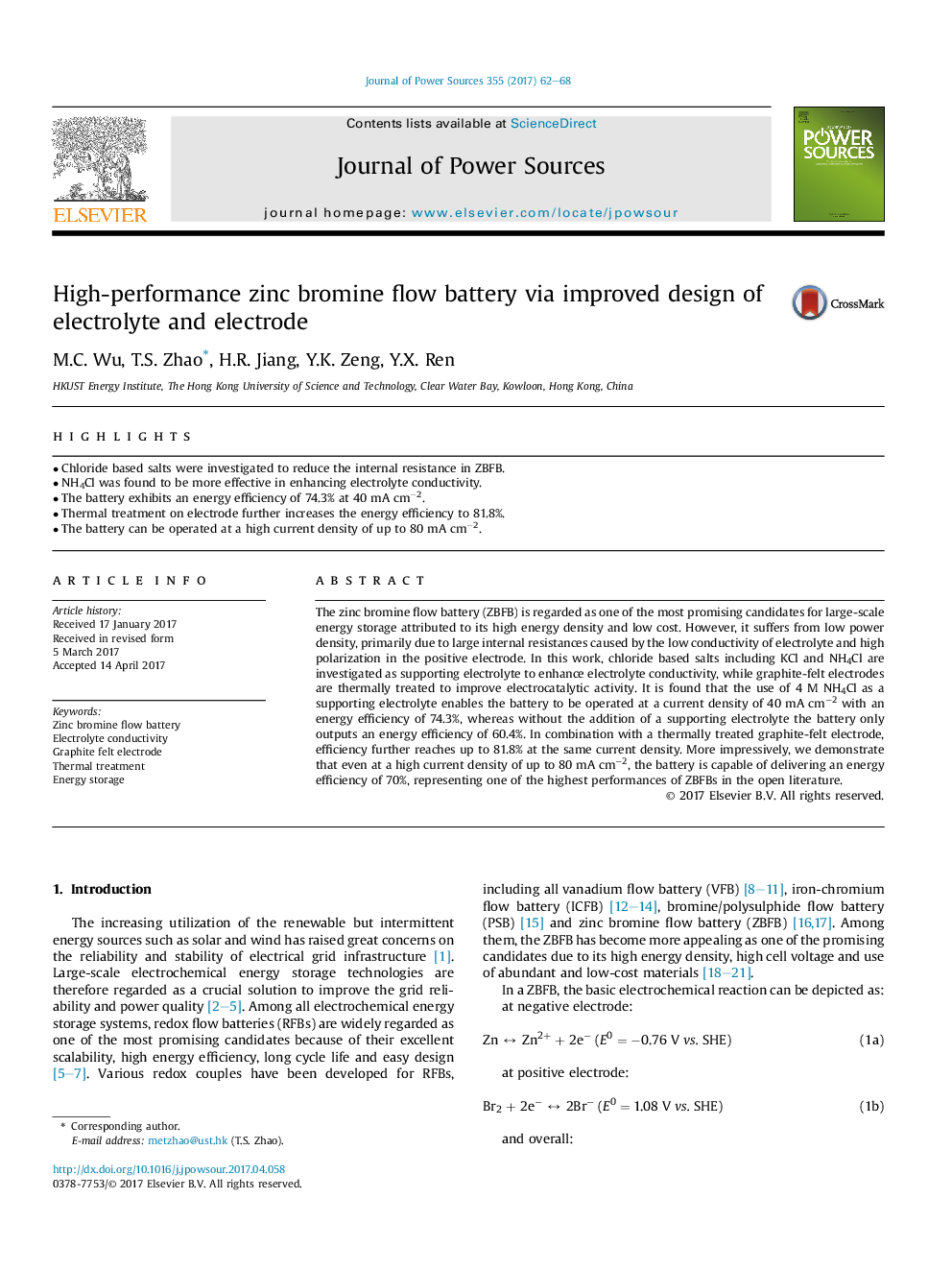| Article ID | Journal | Published Year | Pages | File Type |
|---|---|---|---|---|
| 5149123 | Journal of Power Sources | 2017 | 7 Pages |
Abstract
The zinc bromine flow battery (ZBFB) is regarded as one of the most promising candidates for large-scale energy storage attributed to its high energy density and low cost. However, it suffers from low power density, primarily due to large internal resistances caused by the low conductivity of electrolyte and high polarization in the positive electrode. In this work, chloride based salts including KCl and NH4Cl are investigated as supporting electrolyte to enhance electrolyte conductivity, while graphite-felt electrodes are thermally treated to improve electrocatalytic activity. It is found that the use of 4Â M NH4Cl as a supporting electrolyte enables the battery to be operated at a current density of 40Â mAÂ cmâ2 with an energy efficiency of 74.3%, whereas without the addition of a supporting electrolyte the battery only outputs an energy efficiency of 60.4%. In combination with a thermally treated graphite-felt electrode, efficiency further reaches up to 81.8% at the same current density. More impressively, we demonstrate that even at a high current density of up to 80Â mAÂ cmâ2, the battery is capable of delivering an energy efficiency of 70%, representing one of the highest performances of ZBFBs in the open literature.
Related Topics
Physical Sciences and Engineering
Chemistry
Electrochemistry
Authors
M.C. Wu, T.S. Zhao, H.R. Jiang, Y.K. Zeng, Y.X. Ren,
